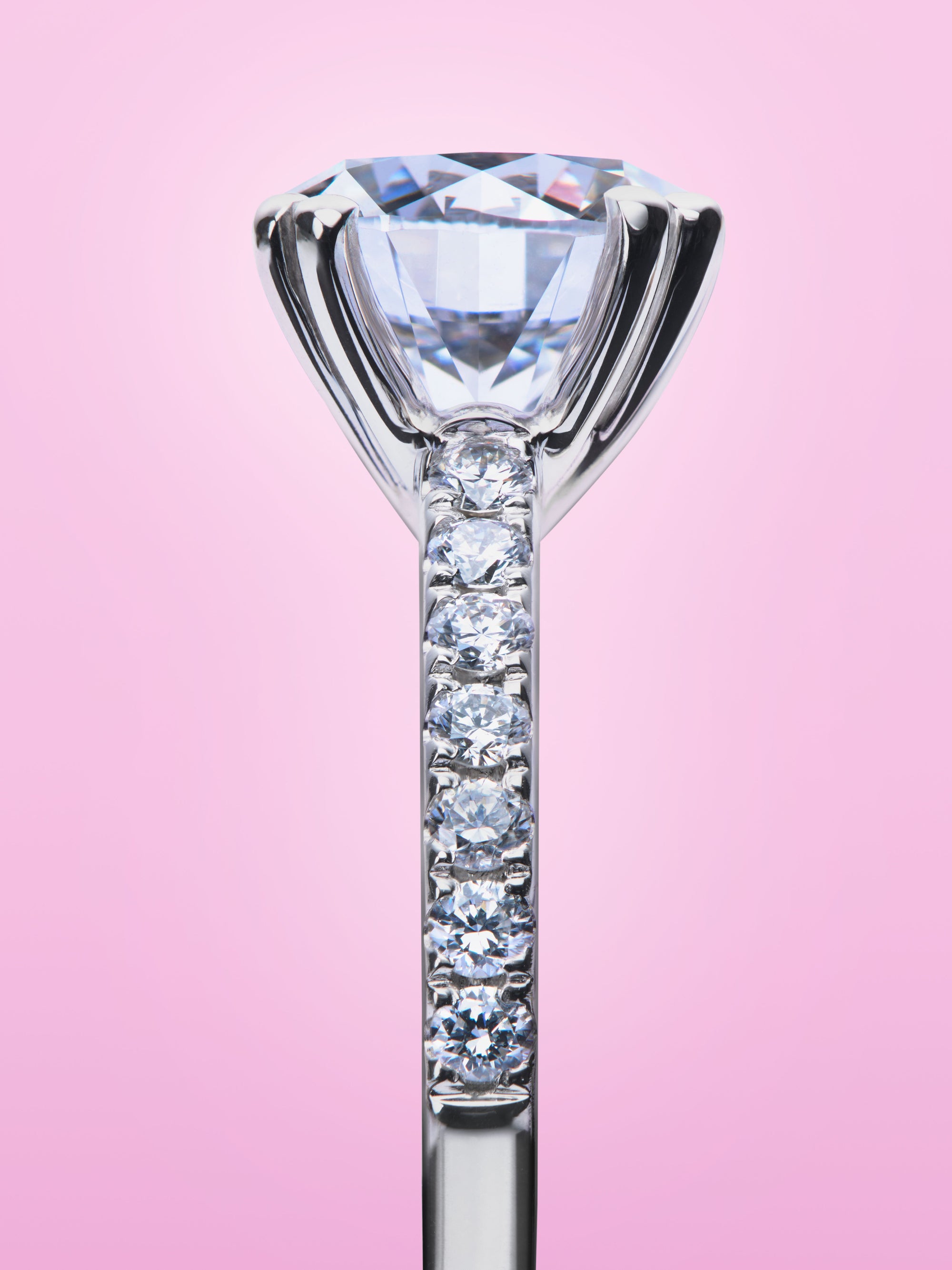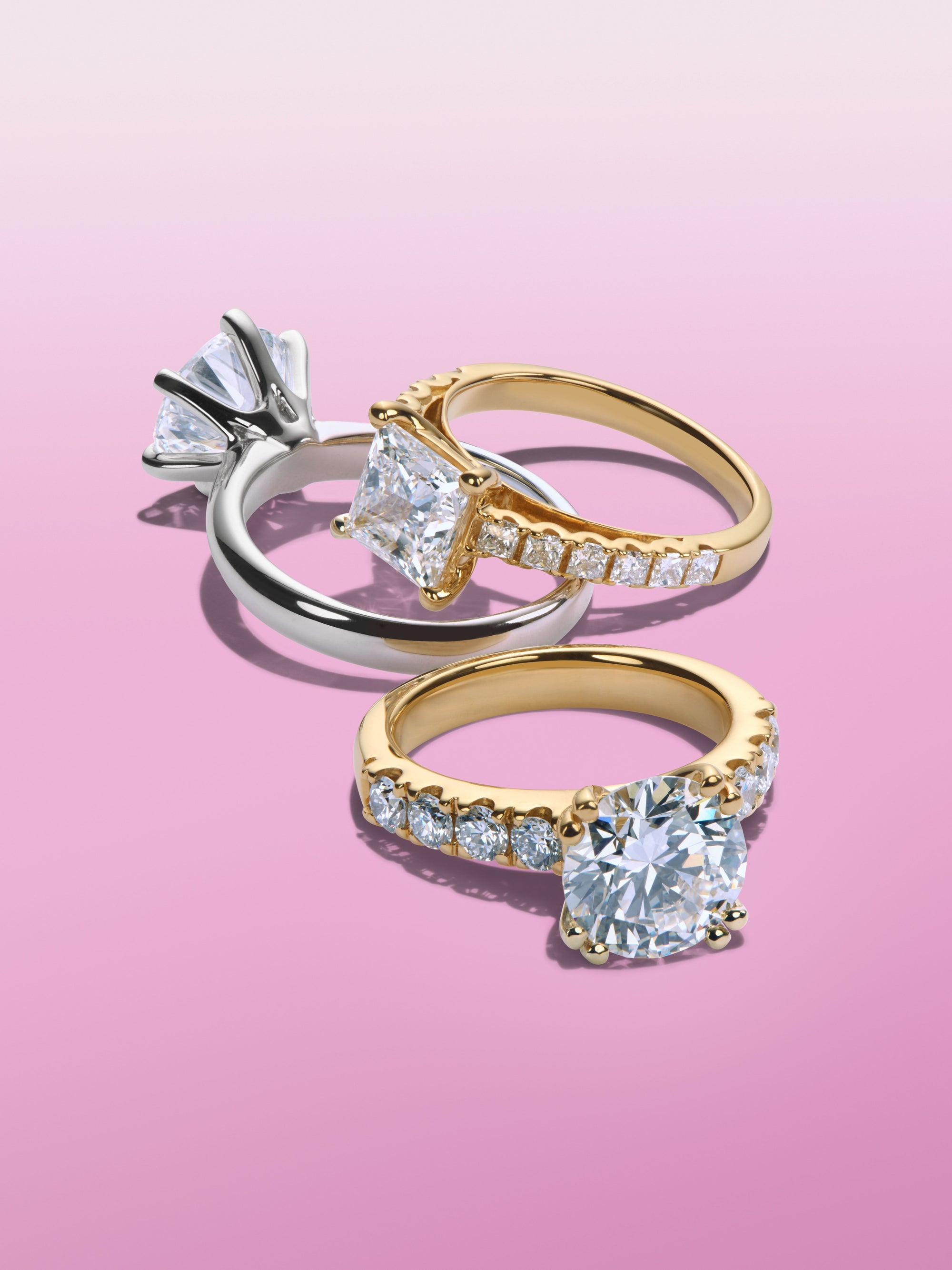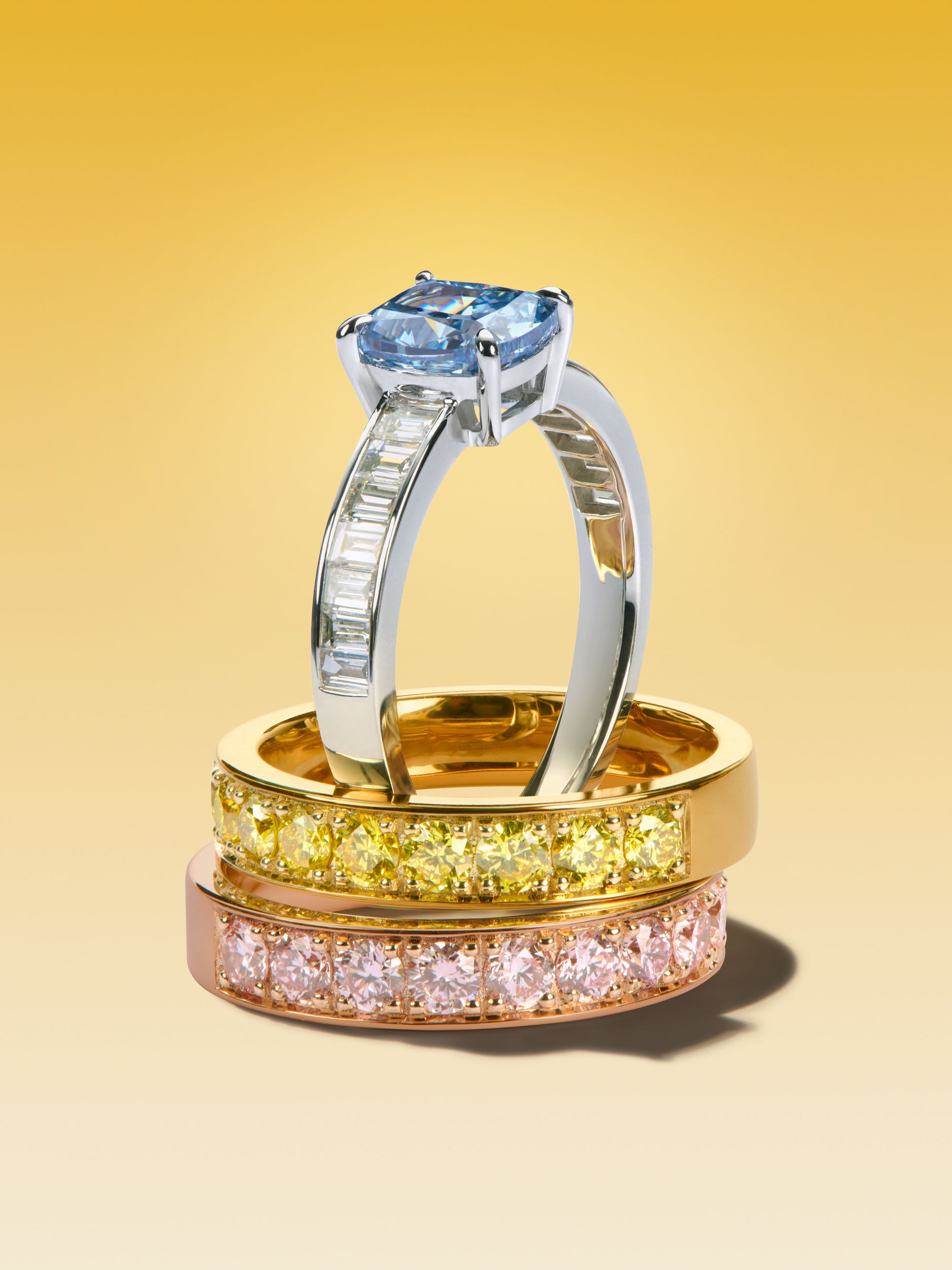As a man, you might be more familiar with buying a high-quality watch — a decision often based on precision, engineering, and craftsmanship. Just like choosing a fine timepiece, selecting a lab-grown diamond engagement ring for the woman you love can be an exciting process that combines both technical knowledge and thoughtful decision-making.
In this guide, we’ll break down the rational, technical aspects of choosing the perfect lab-grown diamond engagement ring, giving you the tools to approach this decision with confidence and precision. From diamond quality and setting options to ethical considerations, this is the ultimate guide to help you make a choice that reflects both luxury and responsibility.
1. The Engineering of a Diamond: Understanding the 4Cs
Much like the inner workings of a watch, the quality of a diamond comes down to its technical precision. The 4Cs — cut, clarity, carat, and color — are the foundation of diamond evaluation, and each one affects the performance, brilliance, and value of the stone. Think of it as the mechanics that ensure the diamond shines and lasts just as the engineering of a watch ensures accuracy and longevity.
Cut: The Precision of Light Reflection
Just as the craftsmanship of a fine watch depends on the precision of its movement, a diamond’s cut determines its brilliance and sparkle. The cut reflects how well the diamond’s facets interact with light, much like the intricate parts of a watch work in harmony to keep perfect time.
- What to Look For: Diamonds are graded from Excellent to Poor based on their cut quality. For maximum brilliance, choose diamonds graded Excellent or Very Good.
- Rational Choice: A well-cut diamond will always appear more brilliant, regardless of its size. Think of this as the precision movement of a watch — it’s the element that brings everything together.
Clarity: The Absence of Internal Flaws
When examining a watch, you appreciate the clear, flawless design. Similarly, clarity in a diamond refers to the absence of internal or external imperfections (inclusions and blemishes). The fewer flaws, the better the diamond performs in terms of light reflection, much like a flawless watch dial is easier to read and appreciate.
- What to Look For: Opt for diamonds graded VVS (Very Very Slightly Included) or VS (Very Slightly Included) for the best balance between clarity and value.
- Britta Dietsche’s Tip: At Britta Dietsche, we only offer diamonds with VVS and VS clarity, ensuring that your engagement ring offers superior quality without visible imperfections.
Carat: The Weight and Presence
Just as watch buyers often consider the size and weight of the timepiece, carat weight is an essential factor in choosing a diamond. Carat affects the physical size of the stone, but just as in watches, bigger doesn’t always mean better — the design and craftsmanship play a significant role.
- What to Look For: Lab-grown diamonds allow you to prioritise size without compromising on other factors like cut and clarity, thanks to their cost-efficiency compared to mined diamonds.
- Rational Choice: Just as you might balance the weight and function of a watch, consider the balance between carat size and diamond quality. A smaller, high-quality stone can often appear more brilliant than a larger, poorly cut stone.
Diamond Shape: Maximising Visual Impact
Just like the size and shape of a watch case can affect its visual appeal, the shape of the diamond influences how large it appears to the naked eye. Even when diamonds have the same carat weight, some shapes can make the stone look larger than others.
- Round: The most popular shape, round diamonds are cut for maximum brilliance, but their depth means they can appear smaller compared to other shapes of the same carat weight. For example, a 1-carat round diamond typically measures about 6.5mm in diameter.
- Pear: Pear-shaped diamonds have an elongated form that creates the illusion of a larger stone. A 1-carat pear diamond typically measures around 8.5mm in length by 5.5mm in width, giving it more surface area than a round diamond of the same weight, which results in a bigger appearance.
- Oval: Similar to pear-shaped diamonds, ovals are elongated and offer a larger visual impression for the same carat weight.
- Rational Choice: If you want the diamond to appear larger, consider choosing shapes like pear or oval, which maximize the stone's surface area. This can be compared to selecting a larger watch case for a bolder presence on the wrist.
2. Setting Options: The Frame of Your Masterpiece
Think of the setting as the frame for the diamond, much like the casing of a fine watch showcases and protects its movement. The setting not only holds the diamond securely but also enhances its overall appearance, much like a watch’s case protects the dial while adding to its visual appeal.
Popular Settings
- Solitaire: A classic, simple setting that allows the diamond to be the star of the show, much like a minimalist watch that focuses on its precision without distraction.
- Halo: A central diamond surrounded by smaller stones, creating extra sparkle and the illusion of a larger center stone — akin to a watch with intricate detailing that draws attention to its craftsmanship.
- Bezel: Similar to a solidly built watch case, this setting surrounds the diamond with a rim of metal, offering a sleek and modern look while providing extra protection for the stone.
- Britta Dietsche’s Tip: When choosing a setting, think about her lifestyle and style preferences, just as you would consider the functionality and design of a watch. If she leads an active life, a bezel setting might provide the extra security needed while still offering a modern, stylish appearance.
3. Ethical Considerations: The Sustainability of Your Choice
Much like you might choose a watch brand that values craftsmanship and ethical production, choosing a lab-grown diamond for your engagement ring is a decision that reflects your commitment to sustainability and responsible sourcing.
- Conflict-Free: Lab-grown diamonds are conflict-free and produced under ethical conditions, unlike some mined diamonds that are associated with human rights violations and environmental destruction.
- Sustainability: The environmental footprint of lab-grown diamonds is significantly smaller compared to mined diamonds. No large-scale mining means a much lower impact on the planet’s ecosystems.
- Britta Dietsche’s Tip: At Britta Dietsche, all diamonds of 1 carat or more come with an IGI certification, ensuring the diamond meets strict quality standards and is ethically sourced.
4. Budget: Maximising Value with Lab-Grown Diamonds
When buying a watch, you consider the best balance of value, craftsmanship, and performance. Similarly, lab-grown diamonds offer exceptional value for your investment. You can choose a larger, higher-quality stone at a more accessible price than mined diamonds.
- Britta Dietsche’s Tip: With lab-grown diamonds, you can often prioritise size, clarity, or a unique color without exceeding your budget. By investing in lab-grown, you’re getting the best of both worlds — exceptional quality and ethical value.
5. Crafting a Personalised Experience
Just as many watch enthusiasts prefer customising their timepieces, you can also personalise an engagement ring to make it truly one-of-a-kind. Customisation adds a personal touch and reflects your partner’s unique style.
- Personalised Settings: From engravings to choosing a specific combination of diamonds and settings, crafting a custom engagement ring ensures it’s as unique as your relationship.
- Colored Diamonds: For an unforgettable statement, consider lab-grown colored diamonds like pink, yellow, or blue for a modern, luxurious ring.
- Britta Dietsche’s Tip: Britta Dietsche specialises in creating bespoke engagement rings, ensuring your ring is not only luxurious but also personal and meaningful.
Conclusion: A Precision-Driven Decision
Choosing a lab-grown diamond engagement ring is much like selecting a high-quality watch — it’s about appreciating the engineering, design, and craftsmanship behind it. By choosing Britta Dietsche, you’re ensuring that your engagement ring reflects luxury, precision, and sustainability. Let us help you make a decision that not only celebrates your love but also showcases your appreciation for ethical responsibility and timeless beauty.


